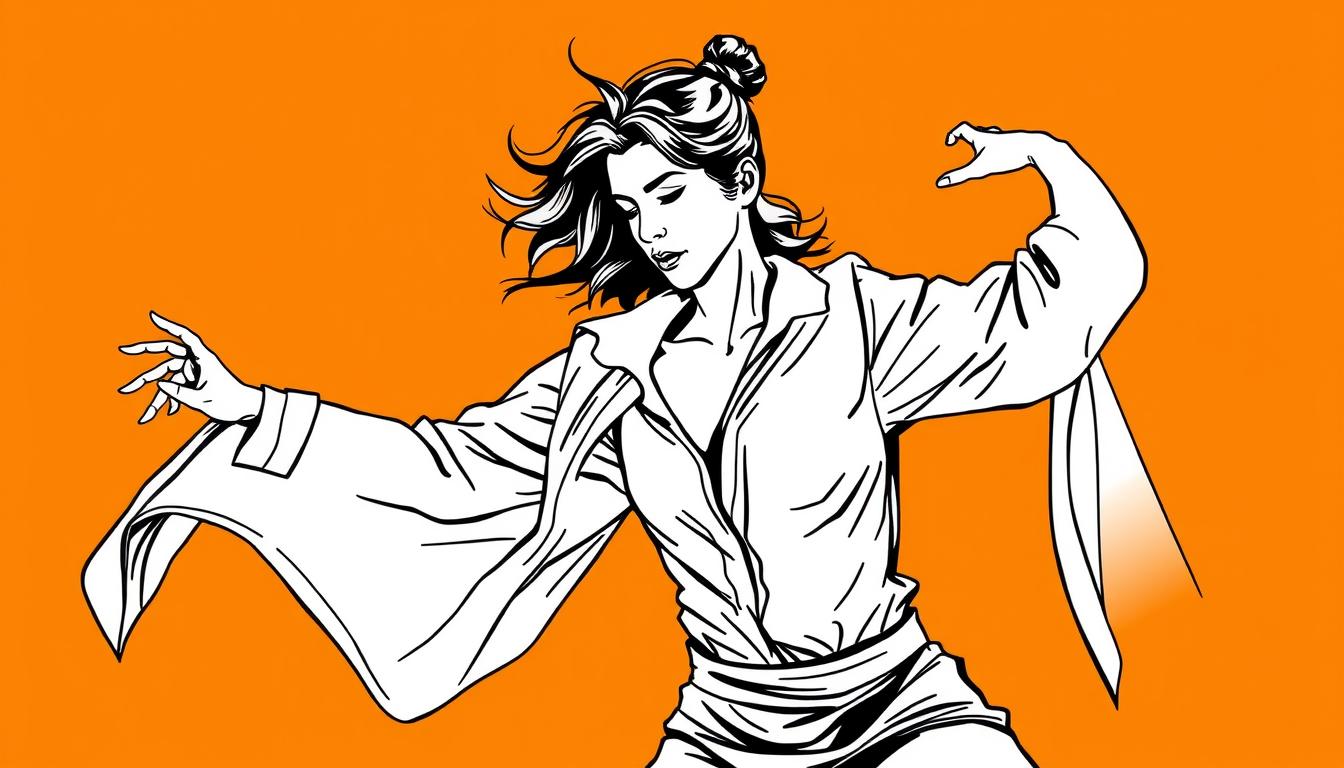Sabrina Sato Rahal carries a name that tells two immigrant stories at once. Her Japanese mother gave her the Sato surname, while her Lebanese-Swiss father contributed Rahal. This cultural blend became her visual signature long before she commanded Brazilian television.
She entered the world in Penápolis, a small city far from the glamour she would later know. Born in that interior São Paulo town, she grew up as the middle child where heritage shaped her daily life. The year 1981 marked her arrival in a place most Brazilians would pass through without notice.
Restless ambition drove her from the start. Penápolis couldn’t contain her hunger for performance. At sixteen, her family traded small-town predictability for São Paulo’s noise and possibility. That move from born Penápolis to national fame proved star power doesn’t require a famous birthplace, just refusal to stay invisible.
Early Life and Cultural Foundations
The rhythm of her future career began in Penápolis, where local stages first felt the energy of a performer who refused to stay small. Her childhood years in this interior city shaped the discipline that would later define her work.
Before the television lights, there was family life. Her multicultural background provided a rich foundation for the artist she would become.
Family Heritage and Childhood in Penápolis
Growing up as the middle child between two sisters taught her early about standing out. Her mother, a psychologist of Japanese descent, and father, a businessman with Lebanese-Swiss roots, created a home that valued both structure and creative expression.
Penápolis offered her first taste of performance. The small city became her initial training ground where she discovered the language of movement.
Early Dance Training and Aspirations
At sixteen, her parents moved the family to São Paulo for better opportunities. The larger city offered advanced dance courses and serious theater training that Penápolis couldn’t provide.
She earned her actress registration during this time, methodically building the credentials needed for a professional career. Two years later, she took the bold step of moving alone to Rio de Janeiro.
Passing the competitive entrance exam for the Federal University of Rio de Janeiro’s dance program proved her technical skill matched her ambition. That period connected her to artists who understood dance as essential communication.
Rise to Prominence Through Reality TV and Entertainment
Reality television opened doors that traditional entertainment had kept firmly shut. The format allowed raw personality to shine through scripted barriers. This new landscape became the perfect stage for emerging talent.
Her background as a dancer provided camera awareness. She understood movement and timing from years of performance. This foundation proved invaluable when unscripted moments demanded authenticity.
Big Brother Brasil Experience and Media Buzz
The Big Brother Brasil house became her national introduction in 2003. As a contestant on the third season, she entered without rehearsal or safety net. For seven weeks, people watched her navigate the game’s challenges.
Elimination came in the eighth week against the eventual winner. Sixty percent of public votes sent her home that time. This rejection freed her from the brother brasil bubble’s constraints.
The experience provided something more valuable than prize money. National visibility created immediate opportunities beyond the show. Media attention shifted from game strategy to career potential.
| Opportunity Type | Pre-Big Brother Brasil | Post-Big Brother Brasil |
|---|---|---|
| Television Roles | Background dancer on variety shows | Featured guest and regular appearances |
| Magazine Features | Limited exposure | Playboy cover in May 2003 |
| Radio Work | None recorded | Regular contributor to Pânico |
| Career Choices | Limited options | Multiple offers including telenovela |
Breakthroughs in Television and Print Media
Playboy magazine recognized her bold personality immediately. The May 2003 cover shoot cemented her image as unapologetic. This move demonstrated her comfort with challenging conventions.
Jovem Pan’s Pânico radio show became her next platform. Guest appearances led to a full-time position by August. Her energy translated perfectly across different media formats.
When TV Globo offered a telenovela role, she made a strategic choice. She declined the established network’s offer. Instead, she committed to Pânico’s television version on RedeTV!.
This decision defined her career trajectory. She chose creative freedom over traditional prestige. The risk paid off with greater artistic control and audience connection.
Sabrina Sato: Career Evolution in Television and Dance
Her work on comedy shows demonstrated a fearless approach that audiences connected with immediately. This period marked significant professional development across multiple television stations.
Transition from Dancer to TV Host
Sabrina Sato built her foundation on Pânico na TV starting in 2004. The chaotic comedy show became her training ground for nearly a decade. She performed risky segments that pushed creative boundaries.
In 2006, the station temporarily removed her for several months due to age rating concerns. She returned stronger, proving her value extended beyond temporary controversies.
Signature Shows and Notable Projects
When the Pânico team moved to Rede Bandeirantes in 2012, she followed loyally. The new show launched with her as a central attraction. By 2013, she accounted for 45% of the program’s merchandising revenue.
After ten years, she announced her departure in December 2013. She signed with RecordTV and debuted her own Saturday night program in April 2014. The show ran for five successful years.
| Career Phase | Television Station | Key Show | Duration |
|---|---|---|---|
| Foundation Building | RedeTV! | Pânico na TV | 2004-2012 |
| Transition Period | Rede Bandeirantes | Pânico na Band | 2012-2013 |
| Lead Host Era | RecordTV | Programa da Sabrina | 2014-2019 |
| Network Peak | Globo Group | Various Projects | 2022-Present |
In March 2022, she joined Globo Group after eight years at RecordTV. This move confirmed her status as a top-tier television personality. Each station shift represented meaningful career growth over time.
Carnival Legacy and Cultural Impact
Beyond the glare of television lights, a different stage awaited. It was built on centuries of tradition and the thunder of drums. Her journey into this world cemented her status as a true icon of Brazilian popular culture.
Iconic Carnival Roles and Moments
Sabrina Sato first embraced Carnival in 2004. She became the muse for Gaviões da Fiel, a major São Paulo samba school. This role was more than wearing feathers; it required learning the precise steps and anthems.
Her dedication was clear. By 2010, the school promoted her to godmother of the drums. This title recognized her ability to energize the percussion section. In 2018, she earned the highest honor as their queen of drums.
Simultaneously, she built a legacy in Rio de Janeiro. She served as muse for Acadêmicos do Salgueiro. Then, from 2011 to 2019, she reigned as drum queen for Unidos de Vila Isabel.
In 2020, Vila Isabel elevated her to overall queen. This rare title placed her at the symbolic heart of their parade. Her return in 2021 felt like a homecoming.
Her style and respect for the samba schools made her a favorite. People saw her not as a famous guest but as a core part of Carnival itself. She earned every moment in the spotlight.
Personal Life, Relationships, and Public Image
Behind the camera flashes and Carnival feathers, a more personal story unfolded. Sabrina Sato’s life away from the stage has been marked by significant relationships and a conscious choice to live authentically.
Relationship Milestones and Family Life
Her romantic path was public, yet she navigated it with purpose. After early relationships following her Big Brother Brasil fame, she found a substantial partnership with actor Duda Nagle in 2016.
Their connection moved quickly. They moved in together within months and announced an engagement in early 2018. That spring, they shared joyful news: they were expecting their first child.
Their daughter, Zoe, was born in November 2018. The arrival of her child reshaped her world, shifting priorities profoundly. For seven years, they built a family life.
In March 2023, Sabrina Sato announced their separation. She handled the news with characteristic directness, prioritizing shared custody and their daughter’s well-being.
A new chapter began in February 2024 when she started dating actor and singer Nicolas Prattes. Their relationship, built on mutual understanding, progressed swiftly. They married in January 2025.
Managing Public Persona and Personal Challenges
She has also been open about living with ADHD. Choosing to speak publicly was a deliberate act. She refused to hide a condition that affects many but is often stigmatized.
This honesty extended to her family life. She made it clear that her daughter’s stability came before any media narrative. Her public image is a blend of vibrant performance and grounded, personal truth.
Media Ventures and Diversified Talent
Beyond the live audience and Carnival drums, a different kind of performance awaited in recording booths and on streaming platforms. Sabrina Sato built a portfolio that proved her versatility. She moved beyond comedy hosting into serious acting and voice work.
Acting Roles in Film and Television
Her recognizable voice brought animated characters to life in Brazilian dubs. She voiced Nani in Lilo & Stitch and Abba in Asterix and the Vikings. These roles introduced her to a younger generation.
In live-action films, she explored character work. She played Martinha Pinéu in O Concurso and Alice in A Grande Vitória. Her role as Divina McCall in Netflix’s Reality Z cleverly merged her reality TV past with horror fiction.
Innovative Hosting and Reality Show Contributions
Her hosting style adapted to new formats and stations. She led culturally significant shows like Made In Japão, which honored her mother’s heritage. On Amazon Prime Video, she hosted the sci-fi dating show Game dos Clones.
At TV Globo, she became a judge on The Masked Singer Brasil. This role let her play an entertainer-critic. She also hosts special events, cementing her status as a prime-time favorite.
| Show Title | Platform/Station | Role | Year(s) |
|---|---|---|---|
| Made In Japão | RecordTV | Host | 2020 |
| Game dos Clones | Prime Video | Host | 2020 |
| Ilha Record | RecordTV | Host | 2021 |
| Saia Justa | GNT (Globo Group) | Host | 2022-2023 |
| The Masked Singer Brasil | TV Globo | Judge | 2022-Present |
Final Reflections on a Trailblazing Journey
The true measure of an artist lies not in their beginnings but in their capacity for reinvention over time. Sabrina Sato turned early setbacks into stepping stones, building a career that spans comedy, hosting, and Carnival royalty. Each phase of her life added depth to her public persona.
Over twenty-plus years, she moved through every level of Brazilian media. People watched her evolve from reality contestant to respected judge. Her work ethic earned each promotion, never relying on past success.
Sabrina Sato’s story resonates because she refused simplification. She balanced motherhood with prime-time television, personal challenges with public expectations. Her authenticity made her relatable to generations of viewers.
She represents what happens when talent meets relentless determination. From Penápolis to national fame, she proved that geography doesn’t define destiny. Her journey continues to inspire those who dare to build their own path.




